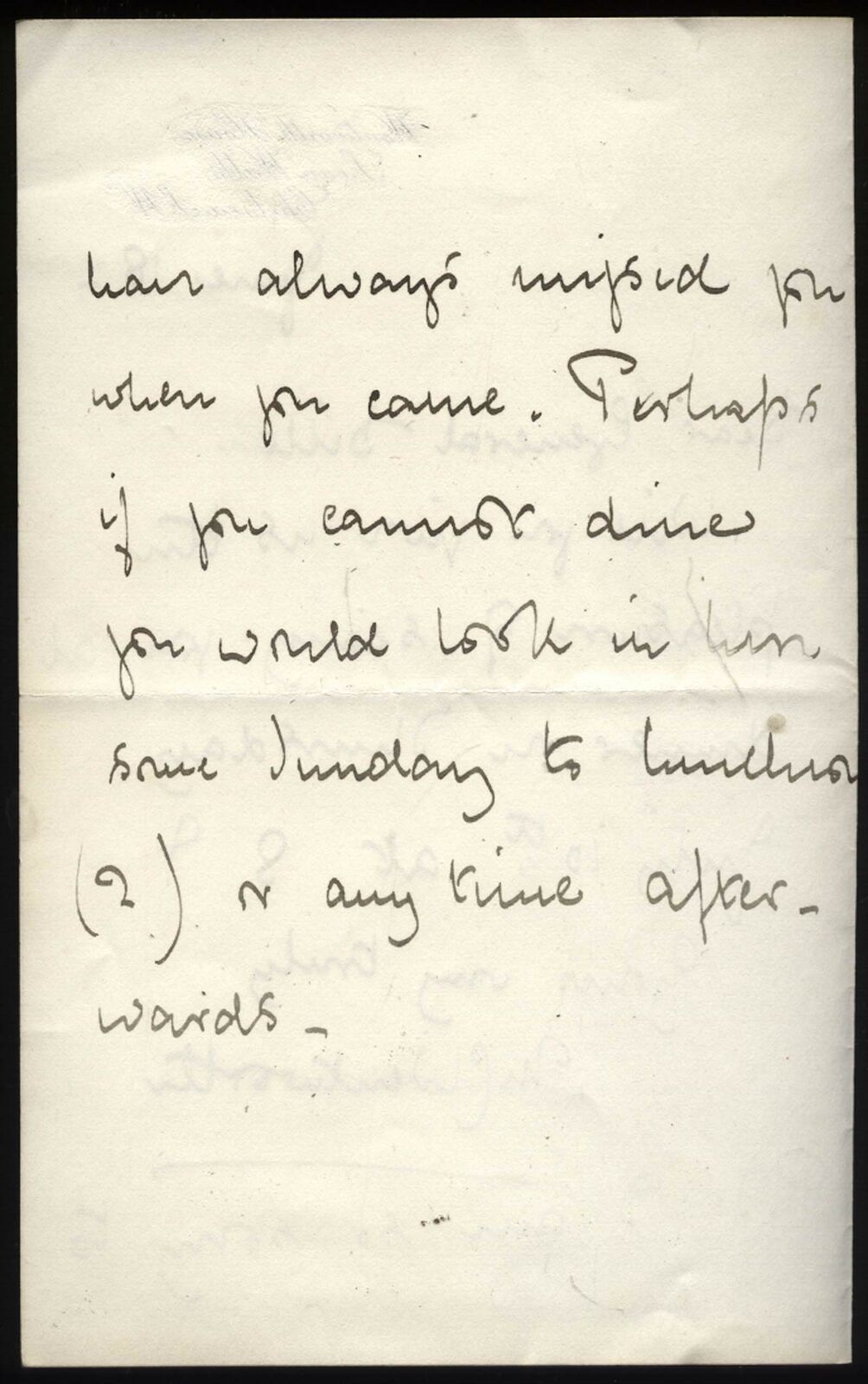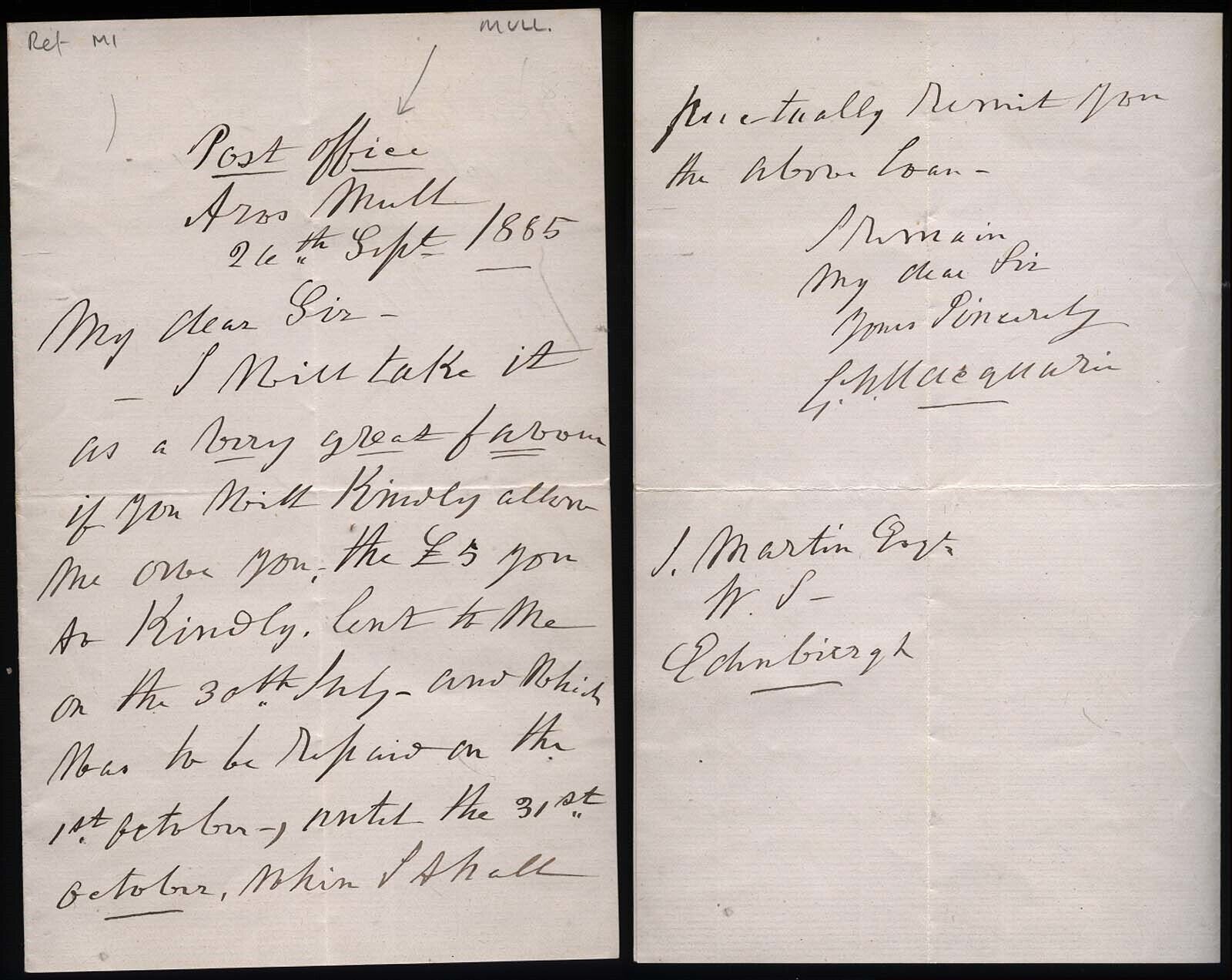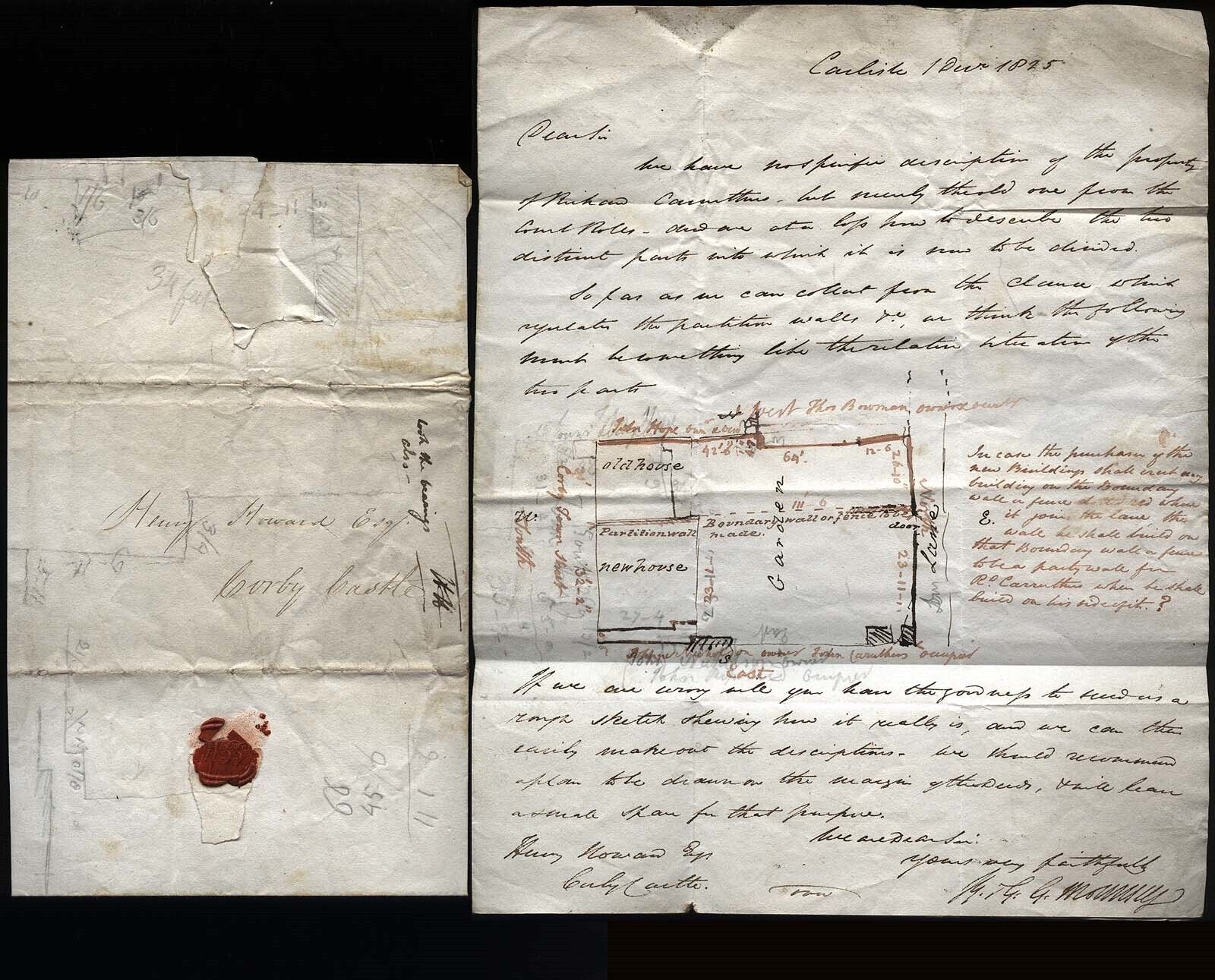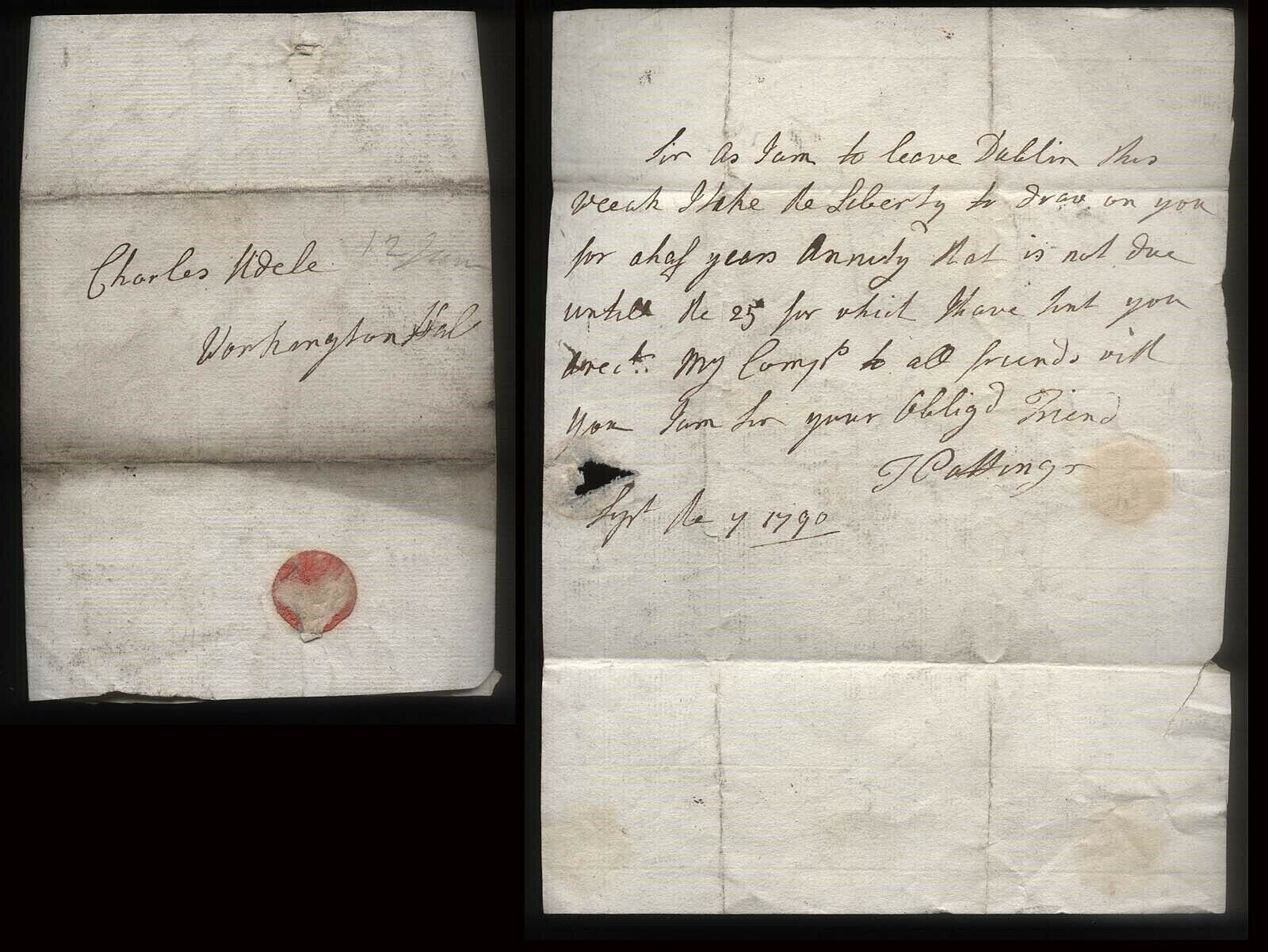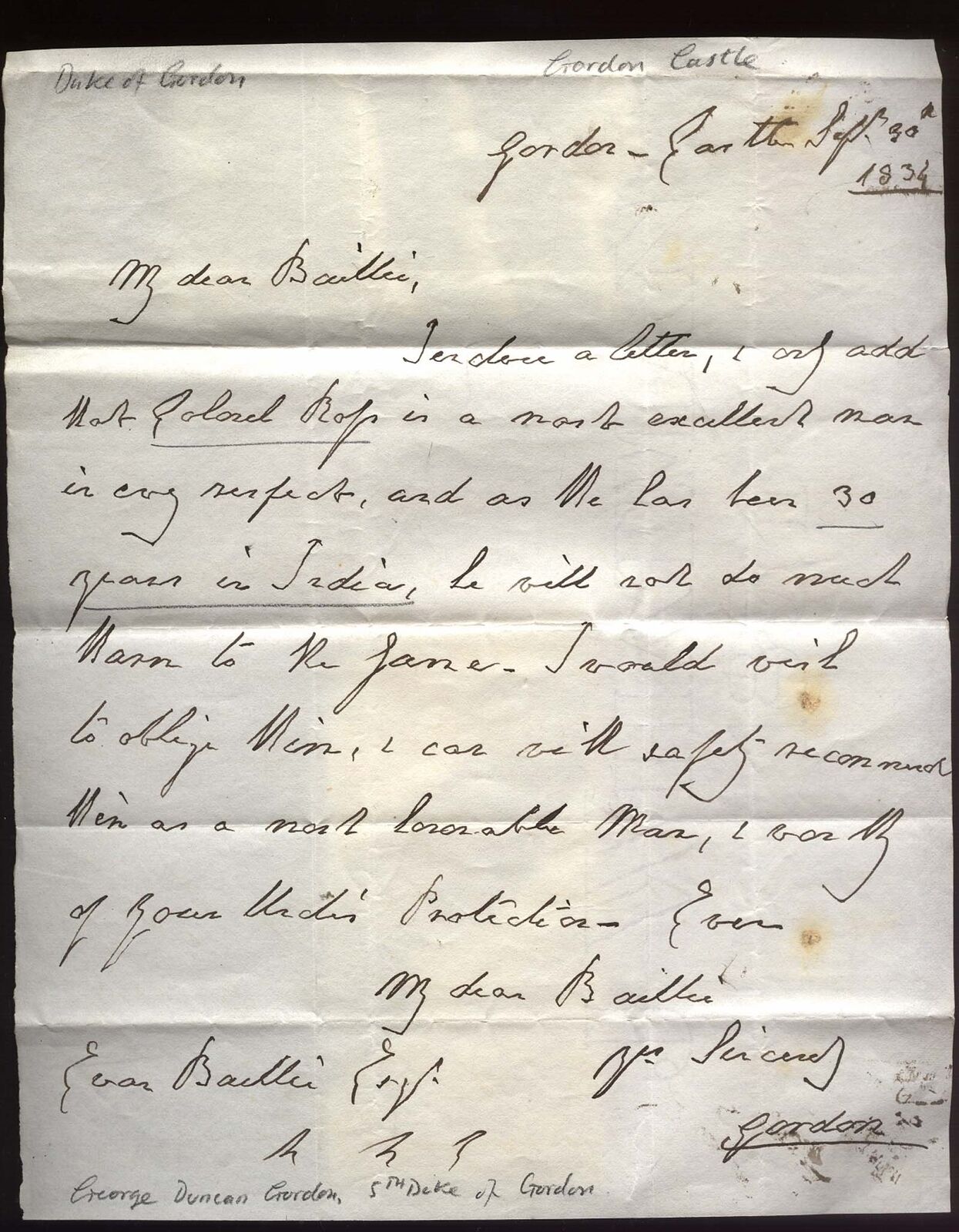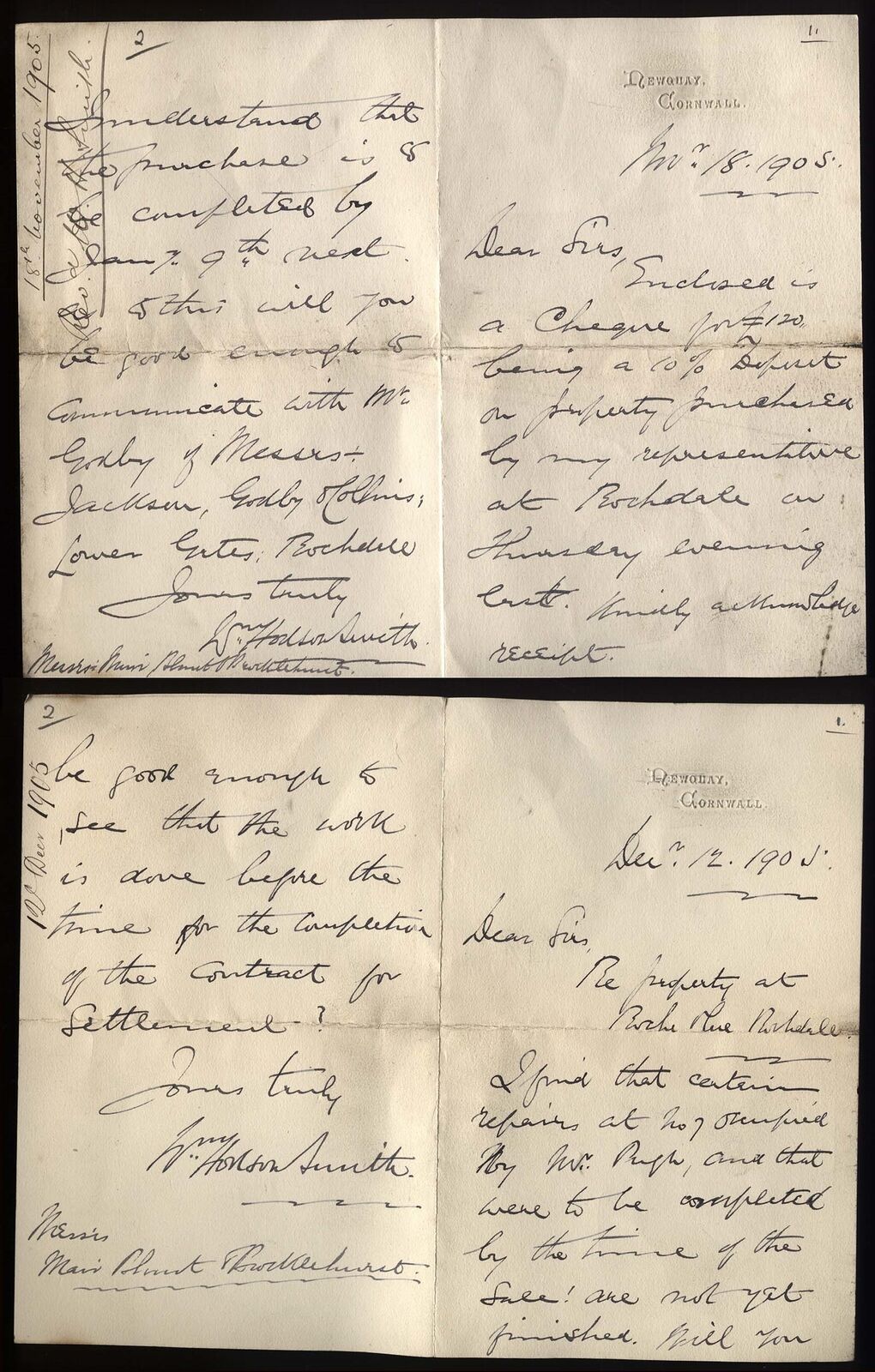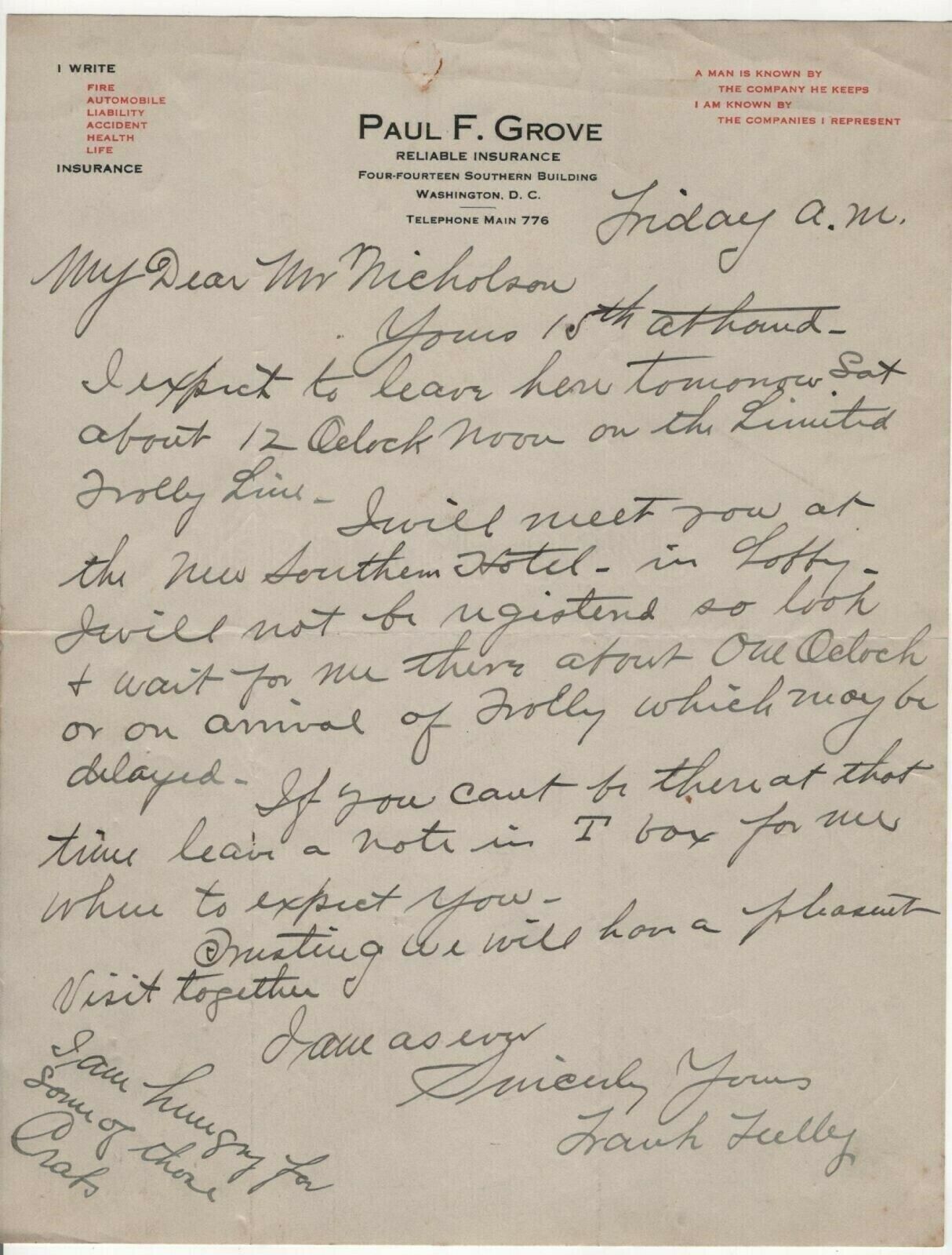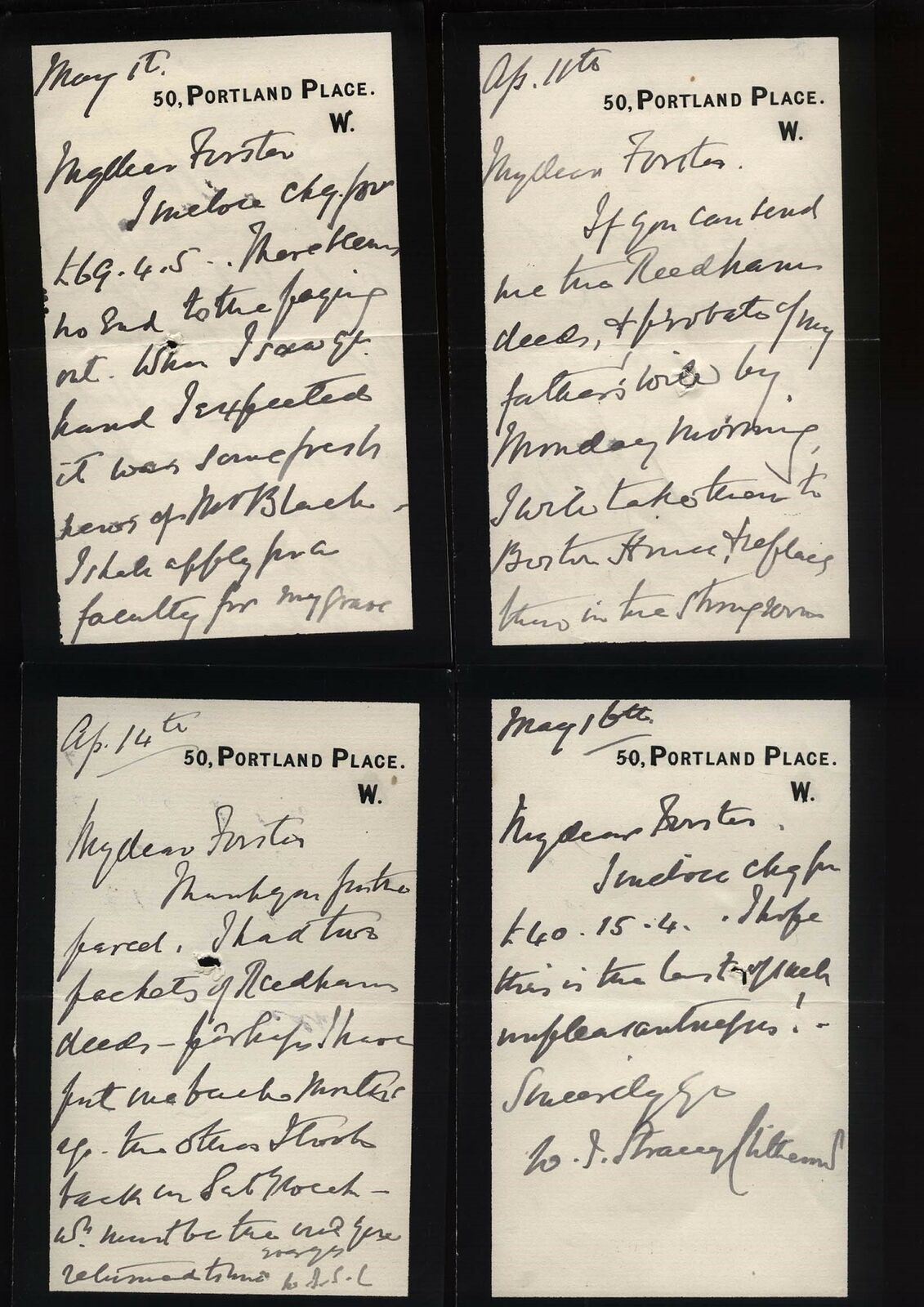-40%
1800-90 Wentworth House, Swan Walk, Chelsea, Mary Caroline, Countess of Lovelace
$ 47.98
- Description
- Size Guide
Description
1800-90 Wentworth House, Swan Walk, Chelsea, Mary Caroline, Countess of LovelaceThis product data sheet is originally written in English.
Pre-Raphaelite Circle & The Chelsea Society
1800-90; Wentworth House, Swan Walk, Chelsea, Mary Caroline, Countess of Lovelace to General Sir Martin Dillon, invitation to dinner.
Ralph Gordon King Noel Milbanke, 2nd Earl of Lovelace (2 July 1839 – 28 August 1906) was a British author of Astarte: A Fragment of Truth concerning George Gordon Byron, first Lord Byron.
Life
He was born at 10 St. James's Square, London on 2 July 1839, the second son of William King-Noel, 1st Earl of Lovelace and Ada Augusta, the world's first computer programmer. His maternal grandparents were the poet Lord Byron and Annabella Byron, 11th Baroness Wentworth.
His father, who succeeded as eighth Baron King in 1833, was created Earl of Lovelace on 30 June 1838. He was lord-lieutenant of Surrey from 1840 to his death in 1893, and interested himself in agricultural and mechanical engineering.
During 1847–8, Ralph was a pupil at Wilhelm von Fellenberg's Pestalozzian school at Hofwyl, near Berne. Subsequently-educated privately, he matriculated at University College, Oxford in 1859, but did not graduate. On 1 September 1862, upon the death of his elder brother, Byron Noel, Viscount Ockham – who had succeeded his grandmother, Lady Byron, as twelfth Baron Wentworth – Ralph himself became thirteenth Baron Wentworth, and Viscount Ockham (the courtesy title of Lord Lovelace's heir-apparent). He had assumed the surname of Milbanke, Lady Byron's maiden surname, by royal license on 6 November 1861.
Taking little part in public life, he read widely and showed independent if rather erratic judgment. At the age of twenty-two he spent a year in Iceland, and was a zealous student of Norse literature. In early life he was a bold Alpine climber, he spent much time in the Alps, and in 1887 made the first ascent of the Aiguille Noire de Peuterey with his guide, Emile Rey,[2][3]:89 A peak of the Dolomites also bears his name.[4][citation needed] An accomplished linguist, he was especially conversant with Swiss and Tyrolese dialects. His intimate acquaintance with French, German, and English literature was combined with a fine taste in music and painting. He enjoyed the intimacy of W. E. H. Lecky and other men of letters.
In 1893, he succeeded his father as second earl of Lovelace. In 1906, he privately printed Astarte: A Fragment of Truth concerning George Gordon Byron, first Lord Byron, dedicated to M. C. L. (his second wife, nee Mary Caroline Stuart-Wortley, married 30 December 1880). This vigorous if somewhat uncritical polemic purported to be a vindication of Lovelace's grandmother, Lady Byron, from the aspersions made upon her after the "revelations" of Mrs. Beecher Stowe in 1869–70. Lovelace alleged, on evidence of hitherto undivulged papers left by Lady Byron, and now at his disposal, that Byron's relations with his half-sister, Mrs. Augusta Leigh, were criminal, and that she was the Astarte of the poet's Manfred. Lovelace printed a statement signed in 1816 by Dr. Lushington, Sir Robert Willmot, and Sir Francis Doyle, and various extracts from correspondence. He also cited a letter in support of his conclusion from Sir Leslie Stephen, who had examined the papers. Astarte provoked replies from a Mr. John Murray and from a Mr. Richard Edgcumbe.
Lovelace died very suddenly at Ockham Park, Ripley, Surrey, on 28 August 1906. After cremation at Woking Crematorium, his ashes were buried in the King Chapel over the family vault in Ockham church.
Family
He was twice married: first on 25 August 1869, to Fanny (died 1878), third daughter of George Heriot, vicar of St. Anne's, Newcastle; second on 10 December 1880, to
Mary Caroline, eldest daughter of the Rt. Hon. James Stuart-Wortley; she survived him.
There was no male issue. Lovelace's daughter, Ada Mary, by his first wife, succeeded to her father's barony of Wentworth. The earldom of Lovelace devolved on his half-brother Lionel Fortescue King, son of the first earl by his second wife.
THE CHELSEA SOCIETY
In 1926 the imminent demolition of Lombard Terrace on the Sloane STANLEY estate aroused local indignation, with a printed petition, and was commented on in the national press. This row of simple 3-storeyed 18th or early 19th century buildings with three or four old-fashioned shops, typical of its period, faced the river at the junction with Church Street, and was all that survived of Lombard Street after the creation of Chelsea Embankment, and almost all that remained of the old Chelsea riverside. One house incorporated the northern portion of the much older Arch House.
Chelsea residents petitioned against demolition but without success, and all disappeared but two, given temporary reprieve because the tenants were protected. This and other losses in the recent past, with the threat to other parts of old Chelsea which had revived with renewed interest in redevelopment, led to the formation of the Chelsea Society , to protect and foster what they described as the amenities of Chelsea.
It came into being at a meeting in April 1927 at Wentworth House, Swan Walk, through the efforts of Reginald Blunt,
who saw the need to co-ordinate local opinion before changes were forced through. The difficulties in saving buildings were exacerbated by the many residents whose stay in the area was brief (as is the case today).
General Sir Martin Andrew Dillon GCB CSI (19 June 1826–1913) was an Irish senior officer in the British Army.
Biography
Dillon was the son of Major Andrew Dillon and entered the British Army in 1843.
He was present as a captain at the Siege of Lucknow during the Indian Mutiny of 1857 and as a major in the subsequent Oudh campaign of 1858. In the China Campaign of 1860 he served as an assistant adjutant-general on the staff of Major-General Sir Robert Napier and as the latter's military secretary in India and Abbysinia. He was Aide-de-Camp to Queen Victoria from 1868 to 1878 when, now promoted Major-general, he was appointed assistant military secretary to Prince George, Duke of Cambridge.
He was knighted as a Knight Commander of the Order of the Bath (KCB) in 1887. Promoted lieutenant-general in 1887 and full general on 16 July 1892, he was given the colonelcy of The Prince of Wales's Own (West Yorkshire Regiment) in 1897, transferring in 1913 to be briefly colonel-commandant of the 1st Battalion of the Rifle Brigade.
Dillon was appointed a Knight Grand Cross of the Order of the Bath (GCB) in the 1902 Coronation Honours list published on 26 June 1902, and was invested by King Edward VII at Buckingham Palace on 8 August 1902
MILITARY SERVICE
Dillon, Gen Sir Martin (Andrew) G.C.C. (1932), K.C.B., (1887), S.I. (1872) Indian Army (retired); b. 1826; entered army, 1843; General, 1892; served in Punjab, 1848-49; Kohat Pass, 1850; Crimea, 1856; Indian Mutiny, 1857-59: China. I860; Abyssinia, 1867-68; Brigade-Major, Nepal Frontier; Assistant, Adjutant-General, China; Military Secretary, Bombay; Military Secretary, Abyssinia. (A.D.C. to the Queen); Military Sec. India; Adj-Gen. Gibraltar; commanded the Lucknow and the Rawalpindi Divisions, India, 1884-88; Col, West Yorkshire Regt. (Prince of Wales Own), 1897, Commissioner, Duke of York’s Royal Military School: Commandant. Rifle Brigade, 1915.
Address: 80, St. Cames Square, S.W. Clubs: United Service.
ARCHIVE MATERIAL FOR Dillon, Sir Martin Andrew (1826-1913) Knight, General is held at
1 1880-96: corresp National Library of Ireland MS 41.682 See Annual Return 2007
2 1890-1901: letters to Earl Roberts National Army Museum Templer Study Centre 7101/23, 8310/155-62 NRA 18656
3 1868-86: corresp British Library: Asian and African Studies MSS Eur F 114 NRA 10012
:
Powered by SixBit's eCommerce Solution
1800-90; Wentworth House, Swan Walk, Chelsea, Mary Caroline, Countess of Lovelace to General Sir Martin Dillon, invitation to dinner. Ralph Gordon King Noel Milbanke, 2nd Earl of Lovelace (2 July 1839 – 28 August 1906) was a British author of Astarte: A Fragment of Truth concerning George Gordon Byron, first Lord Byron.LifeHe was born at 10 St. James's Square, London on 2 July 1839, the second son of William King-Noel, 1st Earl of Lovelace and Ada Augusta, the world's first computer programmer. His maternal grandparents were the poet Lord Byron and Annabella Byron, 11th Baroness Wentworth.His father, who succeeded as eighth Baron King in 1833, was created Earl of Lovelace on 30 June 1838. He was lord-lieutenant of Surrey from 1840 to his death in 1893, and interested himself in agricultur
Type
Historical
Street Location
Swan Walk
EAN
Does Not apply
Country
England
Estate or House name
Wentworth House
City/Town/Village/Place
Chelsea
Famous Persons
Countess of Lovelace
Autograph Type
Manuscript Letter
Era
1881-1890
Addressed to
General Sir Martin Dillon
Document Type
Manuscript Letter
